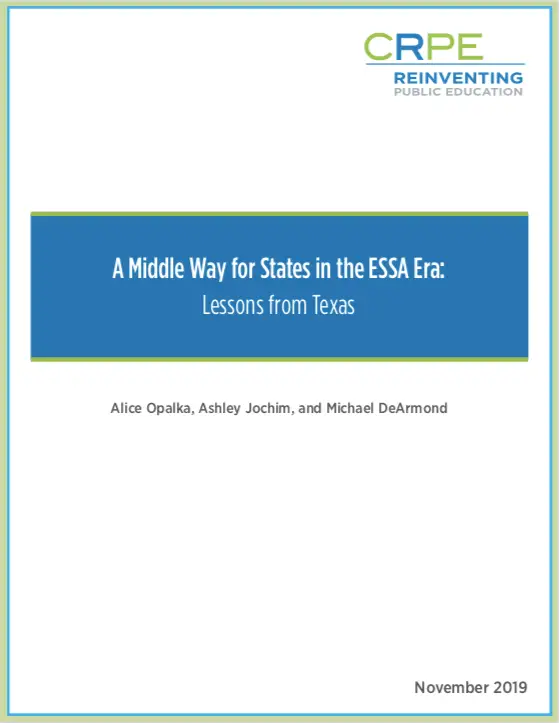In 2017 the Texas Education Agency (TEA) launched the Systems of Great Schools (SGS) initiative. With a combination of incentives and capacity building, SGS attempts to transform how school districts approach school improvement. It calls on districts to manage school performance in new ways, expand access to school choice options, and take a dynamic approach to managing their supply of schools. As one of TEA’s partners said, SGS is “basically changing the operating system of the district.”
Unlike other recent improvement efforts, SGS has set out not to change individual schools, but entire systems. The promise of this approach rests on the hope that districts, in turn, will reinvent themselves in ways that enable them to eliminate low-performing schools and foster higher-performing schools to take their place.
The policy environment in Texas has created conditions that may help realize those hopes. The combination of reprieve from potent state accountability, incentives to partner with external organizations to improve low-performing schools, additional capacity support and grant opportunities, and a strong but flexible framework for locally designed accountability systems help make SGS more appealing, and more feasible, for districts. These policy tools are not new, but the coordinated use of them to create meaningful incentives for districts to voluntarily make system-level changes should be of interest to state leaders elsewhere.
Texas’ initiative suggests several important lessons for other state leaders interested in adopting “middle-way” programs in other state agencies, which we list in this report:
- New programs don’t necessarily require large new departments, but benefit from creative reorganization and realignment of existing programs and resources toward new strategic goals.
- While it’s important to attend to the organizational and human side of change inside the state agency by finding ways to align with existing work and strategies, it’s also crucial to secure political support from the top and outside to make and protect organizational and resource changes.
- Successful change efforts require clear communication about the shifts the state expects to make, what success looks like, and how they will support districts to get there.
While sustained improvement in participating districts is not guaranteed with SGS, this account of TEA’s early experience reimagining state-led change can inform efforts in other states in the post-No Child Left Behind era.






